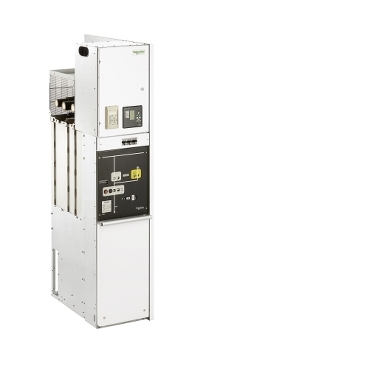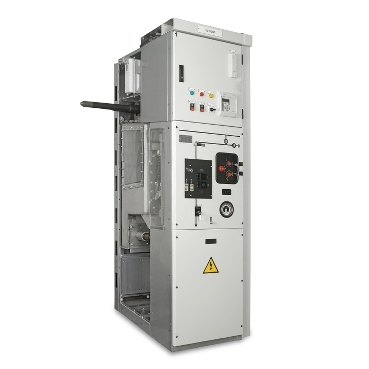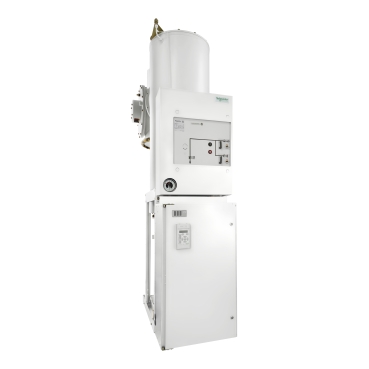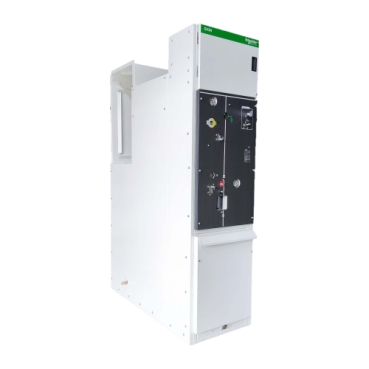What is Gas Insulated Switchgear?
Gas insulated switchgear, or GIS, is a compact electrical system for high-voltage power. It uses a sealed enclosure filled with Sulphur Hexafluoride gas (SF6) to insulate components like circuit breakers and conductors. GIS is ideal for space-constrained areas and offers high reliability, but due to the SF6 gas, it requires specialised handling. On the other hand, it is a highly reliable electrical power distribution solution.
Learn about Schneider Electric's CBGS-0 Gas-Insulated Switchgear. Discover its compact design, advanced safety features, and flexibility, making it ideal for modern power distribution systems.
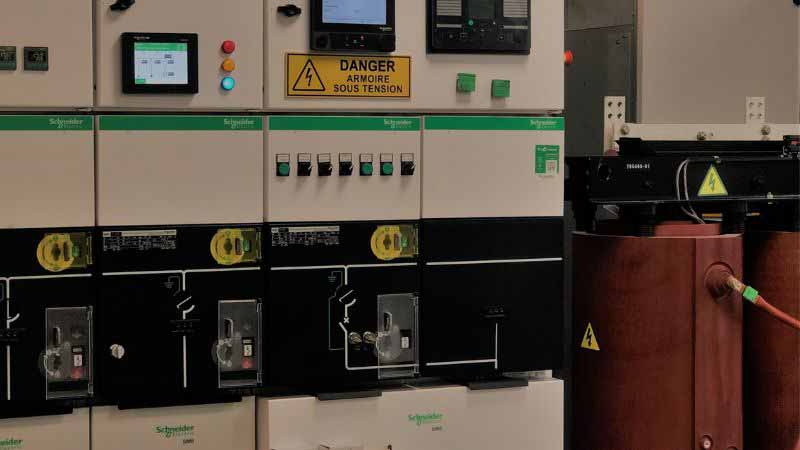
Gas insulated switchgear (GIS) uses Sulphur Hexafluoride (SF6) gas instead of air to insulate electrical components, which allows for a compact design suitable for tight spaces. The SF6 gas is excellent at interrupting current and requires less space than air insulation, making GIS a valuable power distribution tool. Likewise, when a circuit needs interrupting, contacts separate, and SF6 gas flows in, quenching the arc with its insulating properties.
Gas Insulated Switchgear Applications
Gas insulated switchgear (GIS), an electrical switchgear, is used in applications where space is limited, such as substations, industrial facilities, and renewable energy projects.Schneider Electric offers a variety of GIS products, including:
- GMA: A compact and flexible primary switchgear designed for small and medium voltage applications.
- GHA: It is used in a variety of industries, including mining, marine, and oil and gas.
- WI: A gas-insulated switchgear up to 52 kV. It is used in power stations, transformer substations, and railway applications.
- GV3N: An ideal GIS for motor protection in industrial settings.
- CBGS-0: This gas insulated switchgear (GIS) ensures reliable power distribution in urban areas and industries.
What are the benefits of gas insulated switchgear?
- Reduced Maintenance: The sealed enclosure of GIS protects the components from dust, moisture, and pollutants, minimising maintenance needs and extending lifespan.
- Improved Reliability: SF6 gas provides superior insulation and arc quenching, leading to fewer faults and outages.
- Suitable for Harsh Environments: GIS functions well in areas with pollution, humidity, or extreme temperatures where AIS might struggle.
- Increased Flexibility: Gas insulated switchgear (GIS) offers modular construction, allowing for easier expansion and reconfiguration of the power distribution system as needed.
What is the difference between air and gas insulated switchgear?
Air (AIS) and gas (GIS) insulated switchgear are electrical workhorses, but their insulation methods differ. AIS uses open air within a metal enclosure, making it simpler and cheaper. GIS utilises pressurised sulphur hexafluoride gas, a superior insulator that allows for a more compact design. This comes at a cost, with GIS being trickier to install and maintain due to the gas handling. While AIS is common for lower voltages, GIS takes over for high-voltage applications due to its space-saving and insulating properties.



